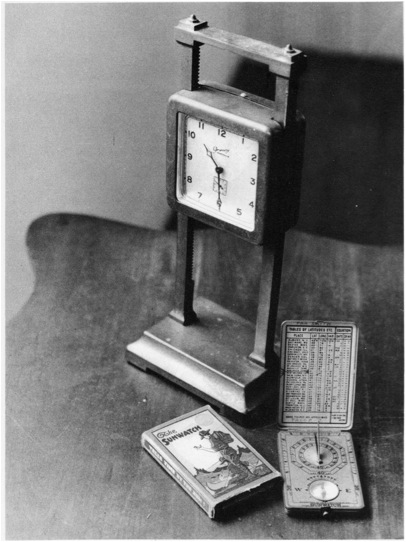Who has a clock? Today, whoever wants one. But let's look historically for a bit...
In studies of house inventories in 1700 Annapolis, Mark Leone made some very interesting observations regarding clocks. First, he found that while wealthy people had more clocks than poor people, both rich and poor began to get clocks at the same time (Leone 202). Second, clocks tend to appear with other objects that demonstrate public usage or social etiquette: dish and utensil sets, napkins, mirrors, chamber pots, etc. These items are all indicative of traits important to modern ideas of productivity (Leone 209).
This clock, sold in 1926 for $13.50, was called "Gravity" - it was powered by its own weight. But look below the clock... it's a $1 "sunwatch!"
 (Bailey 167)
(Bailey 167)
By 1925, most people got the time from clocks and/or watches (O'Malley 309). This really shows two things, though: first, that clocks and watches were becoming more common, meaning that enough had become less expensive, but more importantly that they were becoming more necessary. People don't usually buy useless objects (with the exception of airplane travelers browsing Skymall) en masse, so the increasing ubiquity of clocks speaks to their increasing value and social necessity. It was becoming increasingly important to keep track of time, and to do so by using a clock.
But just because clocks proliferated doesn't mean sundials disappeared. Sometimes the old technology is just as good, as long as you can define what it is "as good" at doing.
The Clock main page: Nathan's Thing / Time as Social Concept / Clock as Social Object / (Im)Precision in Time / Yesterday and Tomorrow / To Catch a Train / Experiencing the Clock
